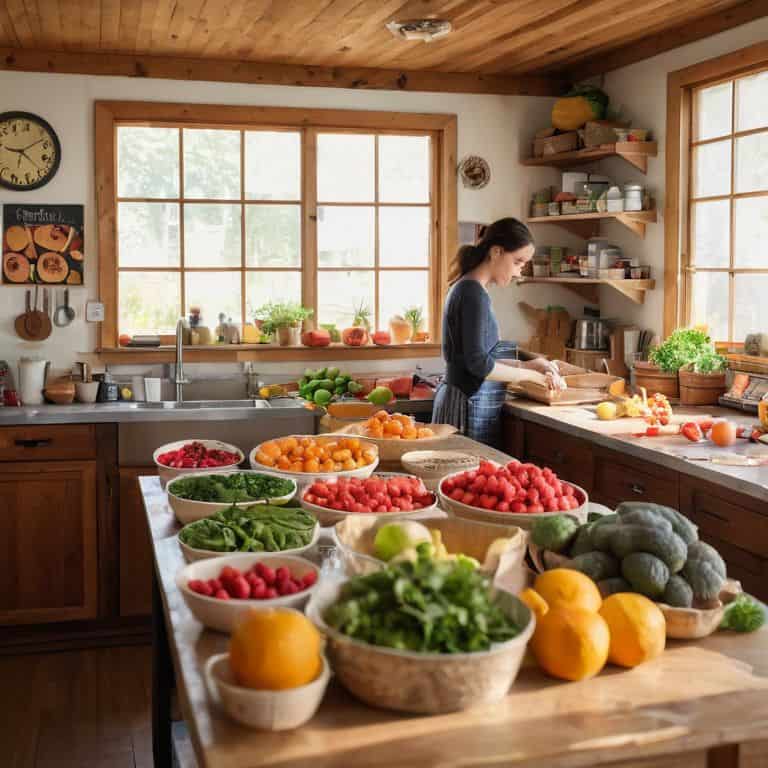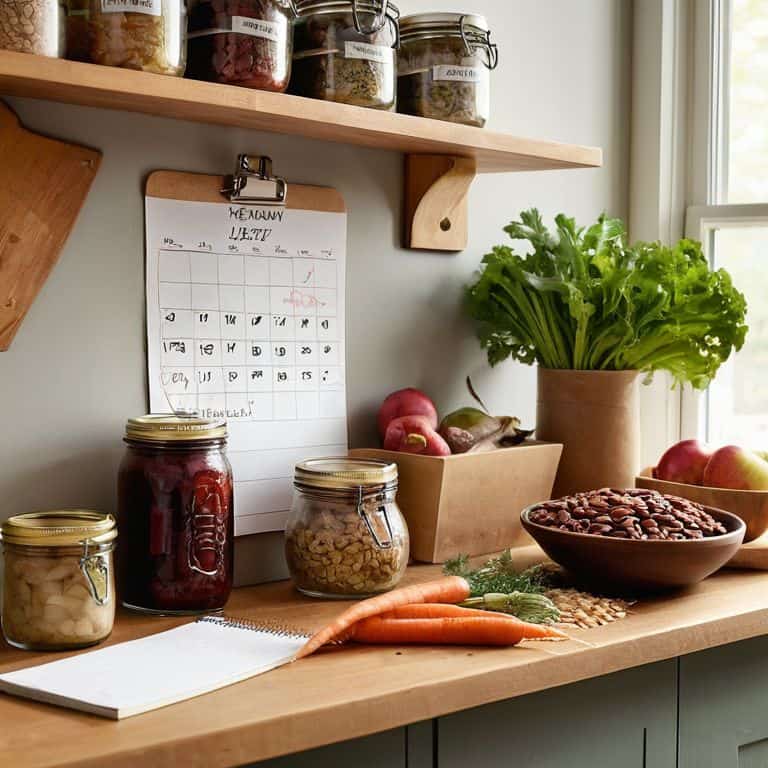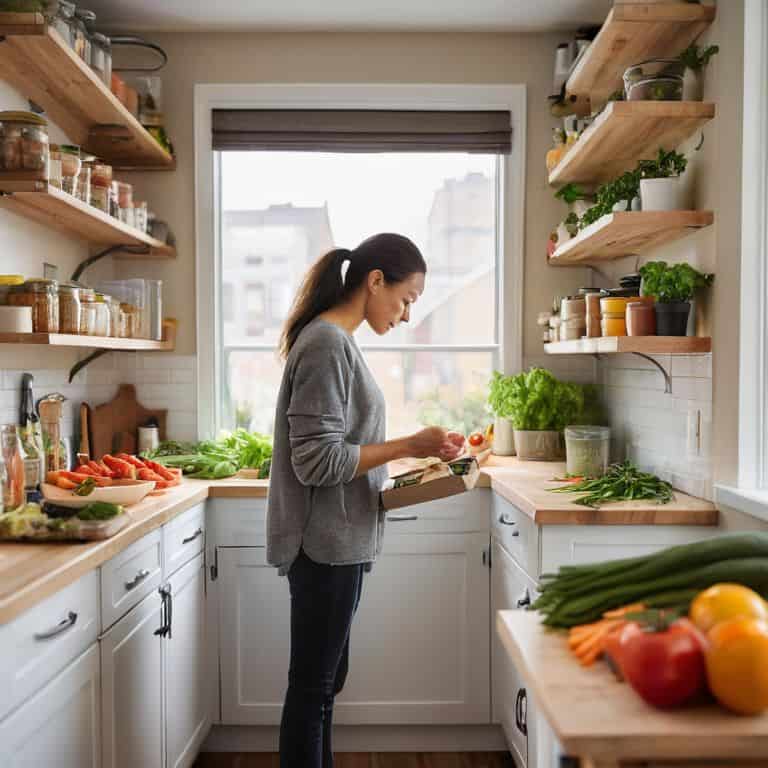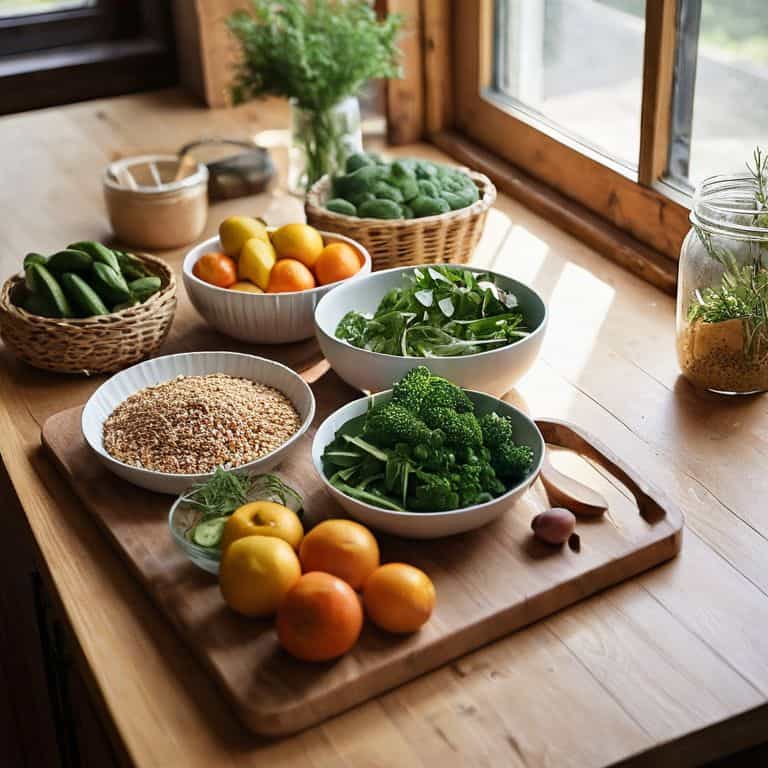As I stood in my own kitchen, staring down at a wilted lettuce head and a fuzzy patch of mold on last week’s leftovers, I couldn’t help but think about the common myth that reducing food waste requires a complete overhaul of our eating habits and a _zero-waste_ lifestyle. But the truth is, learning how to reduce food waste in your kitchen is not about achieving some kind of culinary nirvana; it’s about making small, intentional changes to the way we shop, cook, and store our food. It’s about embracing the beauty of imperfection and finding creative ways to use up every last scrap.
So, what if I told you that reducing food waste is not just about saving money or the planet, but about cultivating a more mindful and _intentional_ approach to cooking and eating? In this article, I’ll share my favorite tips and tricks for reducing food waste in your kitchen, from meal planning and grocery shopping strategies to creative ways to repurpose leftovers and use up every last bit of food. My goal is to provide you with practical, no-nonsense advice that you can apply to your daily life, without feeling overwhelmed or guilty about the occasional slip-up. By the end of this article, you’ll be equipped with the knowledge and inspiration you need to start reducing food waste in your own kitchen, one small step at a time.
Table of Contents
Guide Overview: What You'll Need

Total Time: 1 hour 30 minutes
Estimated Cost: $0 – $20
Difficulty Level: Easy
Tools Required
- Pencil (for planning and note-taking)
- Whiteboard or chalkboard (for meal planning and grocery lists)
- Kitchen scale (for measuring food portions)
- Container or jars (for storing leftovers and food scraps)
Supplies & Materials
- Reusable bags or containers (for storing and transporting food)
- Food storage containers (for keeping food fresh)
- Compost bin (for composting food scraps)
- Meal planning printouts or apps (for planning and organizing meals)
Step-by-Step Instructions
- 1. First, let’s start with a reality check: take stock of what you already have in your kitchen. I like to call this the “fridge excavation” process. Go through your fridge, freezer, and pantry, and make a list of all the ingredients that are nearing their expiration dates or have been lingering for a while. This will help you _get a sense_ of what you need to use up and what you can plan your meals around.
- 2. Next, _plan your meals_ for the week ahead. This might seem like a no-brainer, but trust me, it’s a game-changer. Take some time to think about what you want to cook, and make a list of the ingredients you’ll need. Try to shop your fridge first, using up those ingredients you listed in step one before buying new ones. You can find inspiration online or in cookbooks, but the key is to keep it simple and flexible.
- 3. Now, let’s talk about food storage: it’s amazing how much of a difference proper storage can make in reducing waste. Make sure you’re using airtight containers to keep your ingredients fresh for longer. I like to use _glass jars_ for my dry goods, and _reusable bags_ for my fruits and veggies. It’s also a good idea to label and date your containers, so you can easily keep track of what you have and how long it’s been there.
- 4. One of my favorite ways to reduce food waste is to get creative with leftovers. Instead of throwing away last night’s dinner, try to think of ways to repurpose it into a new meal. You can turn last night’s roast chicken into tomorrow’s chicken salad, or use leftover veggies to make a hearty soup. The key is to _think outside the box_ and have fun with it.
- 5. Another important step is to shop smart: when you’re at the grocery store, try to buy _imperfect produce_ or items that are near their expiration dates. These items are often cheaper and can be just as delicious as their perfect counterparts. You can also consider buying in bulk and freezing items like meats, bread, or veggies to use later.
- 6. Let’s not forget about composting: if you have a garden or even just a few plants, composting can be a great way to reduce your food waste and create nutrient-rich soil. You can compost items like fruit and veggie scraps, eggshells, and even coffee grounds. Just be sure to _follow the rules_ of composting, and avoid adding meat or dairy products to your pile.
- 7. Finally, make it a habit to regularly clean out your fridge and freezer, and take stock of what you have. This will help you avoid _forgetting about_ items that are hiding in the back of the fridge, and reduce the likelihood of finding science experiments in your kitchen. Try to set aside some time each week to tidy up and make a plan for the week ahead.
Reducing Waste Beautifully

As I delve into the world of kitchen inventory management, I’m reminded that reducing waste is not just about using up leftovers, but also about understanding the story behind each ingredient. It’s about recognizing the journey that each item took to reach our tables, and honoring that journey by using it mindfully. For me, this means taking the time to truly understand food expiration labels, and not just throwing things away based on a date.
In my own kitchen, I’ve found that creative recipes for leftovers can be a game-changer. It’s amazing how a little bit of creativity can turn last night’s dinner into tomorrow’s lunch. I’ve started experimenting with zero waste cooking techniques, like using up every last bit of vegetable scraps to make a delicious broth. It’s not just about reducing waste, but also about creating something truly nourishing and delicious.
As I continue on this journey, I’m becoming more and more aware of the importance of sustainable food storage solutions. It’s not just about using up leftovers, but also about storing them in a way that keeps them fresh and safe to eat. I’ve started using reusable containers and bags to reduce my reliance on single-use plastics, and it’s been a small but significant step towards creating a more sustainable kitchen.
Creative Leftover Recipes Uncovered
As I rummage through my kitchen, I’m reminded that leftovers are not just residual meals, but opportunities for culinary reinvention. I’ve transformed last night’s roasted vegetables into a hearty soup, or repurposed stale bread into a crispy crouton-filled salad. The art of creative leftover recipes is all about uncovering the hidden potential in our kitchen’s throwaways. It’s a chance to get inventive, to experiment with new flavors and textures, and to breathe new life into what would otherwise be discarded.
In my own kitchen, I’ve developed a few trusted recipes that never fail to impress. My signature “Fridge Forage Frittata” is a masterclass in reducing waste, combining leftover vegetables, cheese, and herbs into a delicious, satisfying meal. It’s a small act of creativity, but one that brings me joy and helps to reduce the amount of waste that ends up in the trash.
Kitchen Inventory Magic Happens
As I delve into the heart of my kitchen, I find magic in the mundane task of taking inventory. It’s a moment to reconnect with the stories behind each ingredient, each spice, and each forgotten treasure. I recall the vibrant market where I purchased that peculiar spice blend, or the friend who gifted me the handmade ceramic bowl. In this process, I’m not just counting groceries; I’m uncovering the narrative of my life, one shelf at a time. The faded label on a jar of homemade jam whispers tales of summer afternoons spent preserving love and laughter.
In this intimate dance with my kitchen’s inventory, I discover hidden possibilities. A nearly expired can of beans becomes the catalyst for a spontaneous chili night, inviting friends over to share in the feast. The act of inventory becomes an exercise in creativity, a celebration of the beauty in the everyday. As I sift through the shelves, I’m reminded that even in the most ordinary tasks, magic happens – if we only take the time to look.
Unwrapping the Art of Reduction: 5 Whimsical Ways to Tame the Waste
- Embracing the ‘First In, First Out’ Dance: A Refrigerator Reboot
- Unleashing the Power of ‘Use It Up’ Days: A Celebration of Creative Cooking
- The Forgotten Art of Meal Planning: How a Simple Notebook Can Become Your Best Friend
- From Scraps to Masterpieces: The Joy of Repurposing Food Waste in Your Garden
- Love at Second Sight: Giving New Life to Leftovers Through Innovative Portioning and Storage
Embracing the Imperfect Kitchen
The most profound act of sustainability in our kitchens isn’t about creating a flawless, waste-free environment, but about embracing the beauty of imperfection and finding creativity in the chaos of leftovers and forgotten ingredients.
Maya Sterling
Embracing the Beauty of Reduction

As I reflect on our journey to reduce food waste in the kitchen, I’m reminded of the simple yet profound impact of mindful consumption. We’ve explored the basics of kitchen inventory, transformed leftovers into culinary masterpieces, and uncovered the stories behind our throwaways. By embracing these practices, we not only reduce waste but also cultivate a deeper appreciation for the food we eat and the people we share it with. It’s a small step towards a more sustainable lifestyle, but one that can have a significant impact when combined with the efforts of others.
So, let’s carry this mindset beyond the kitchen, into the beautiful mess of everyday life. As we strive to reduce, reuse, and recycle, let’s not forget to find beauty in the imperfect and to celebrate the small victories along the way. For in the end, it’s not just about reducing food waste, but about living a life that’s true to who we are: imperfect, authentic, and deeply connected to the world around us.
Frequently Asked Questions
What are some creative ways to repurpose common kitchen scraps like vegetable peels and chicken bones?
I love rescuing scraps from the brink of disposal. Vegetable peels can become crispy, flavorful chips, while chicken bones transform into nourishing broths. I also use carrot tops to make pesto and onion skins to add depth to soups. It’s amazing how these often-discarded bits can elevate dishes and reduce waste.
How can I effectively plan my meals to avoid buying too much food that might go to waste?
For me, meal planning is all about embracing the unknown – it’s a delicate dance between intuition and intention. I start by taking stock of what I already have, then let my cravings guide me. I jot down a rough outline of the week’s meals, leaving room for spontaneity and unexpected leftovers, and make a list of only the essentials I need to pick up.
Are there any specific storage containers or techniques that can help keep ingredients fresh for longer and reduce waste?
I swear by my vintage Mason jars and airtight containers for keeping ingredients fresh. The key is to store them in a cool, dry place, and to label everything so you can easily keep track. It’s amazing how a little organization can make all the difference in reducing waste and keeping your kitchen running smoothly.
